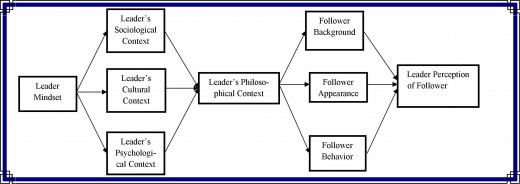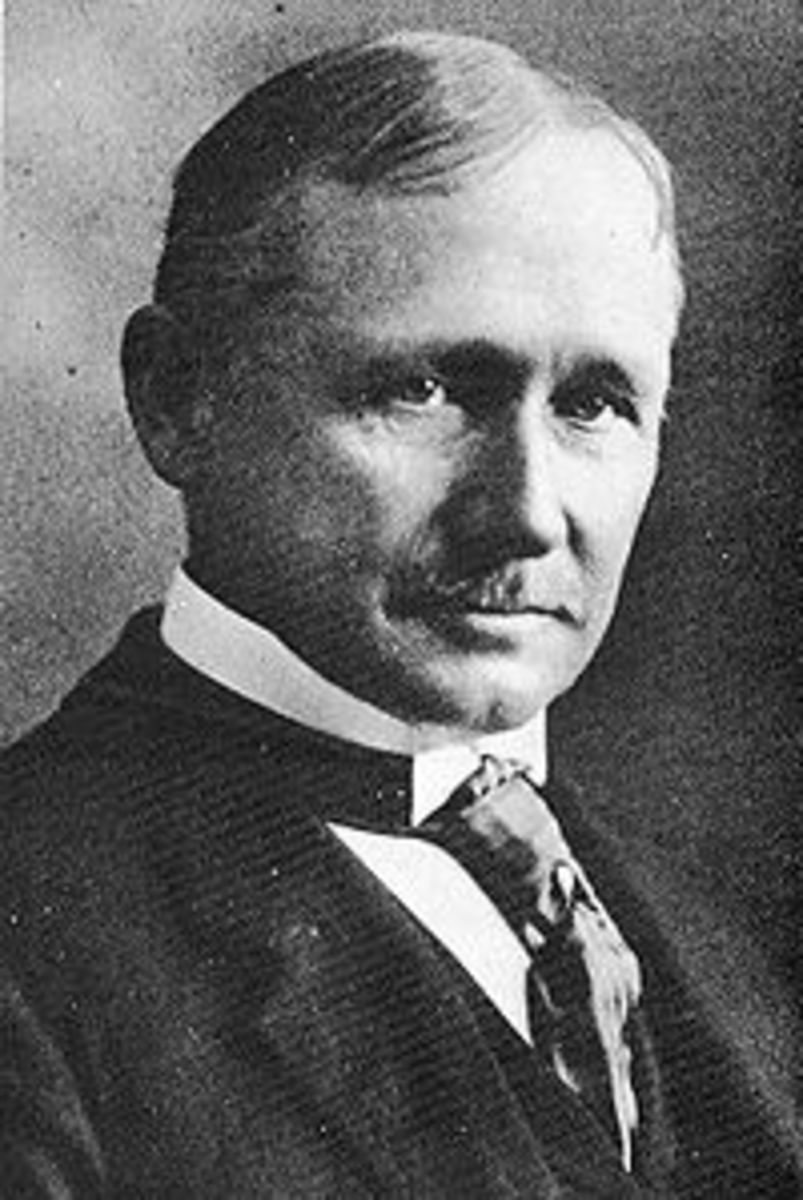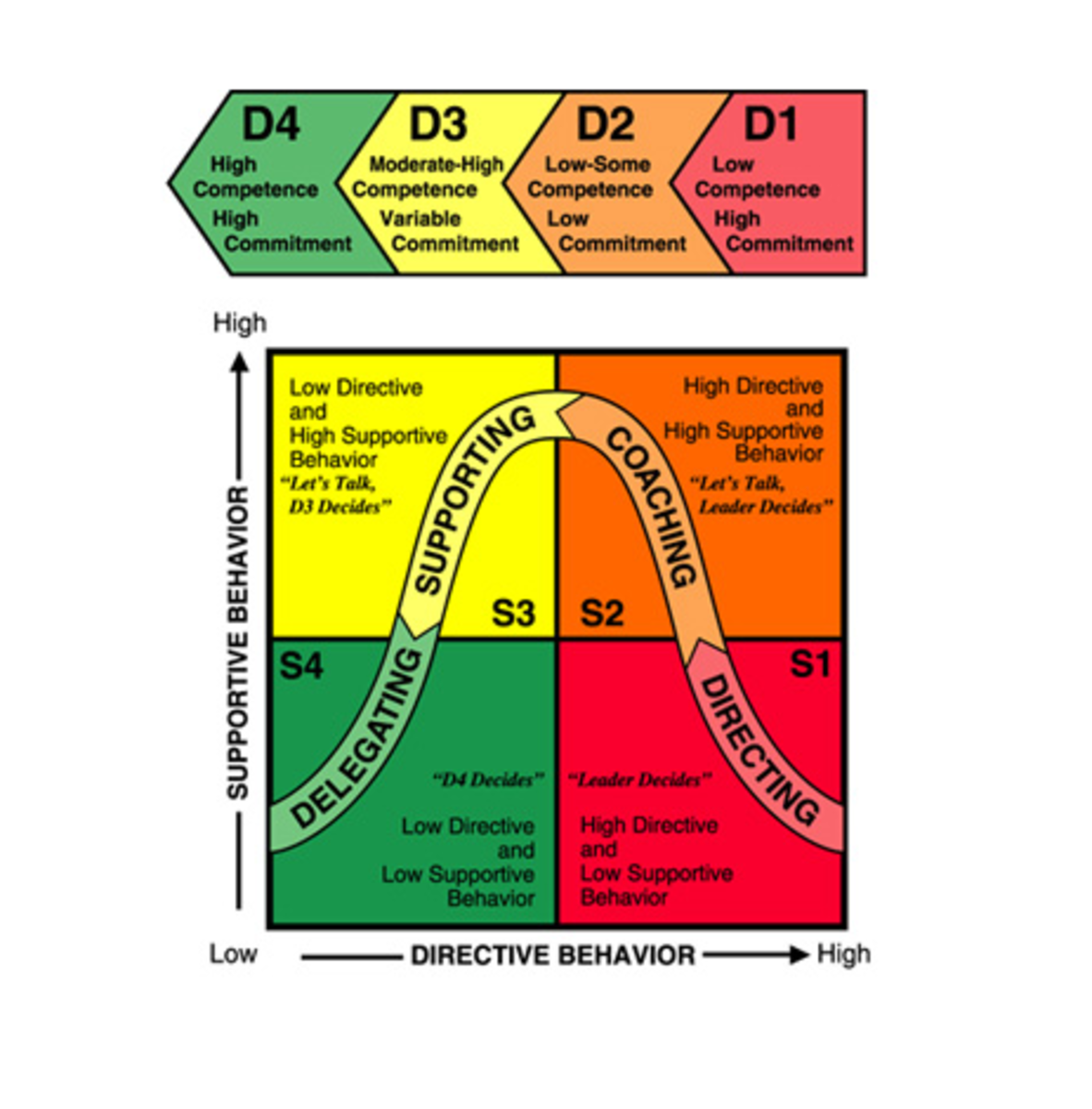Understanding Leaders' Perceptions of Followers - A Hermeneutical Model

Hub Synopsis
This hub presents a hermeneutical model of leader perceptions of followers. In presenting this hermeneutical model, the terms “hermeneutics” and “perception” were examined as to their relative proximity to the concept of reading, analyzing, and interpreting observed phenomena occurring in society and the world at large. It is posited that a given leader employs an informal, internal hermeneutical process by which he or she perceives or interprets followers and the behaviors of followers. Furthermore, the author proposes that a leader’s perceptions of followers are framed within his or her respective sociological, anthropological-cultural, psychological, and philosophical context. Finally, it is shown that a leader’s perception of followers will affect his strategy towards followers.
Key words: leader perception of followers, hermeneutics and leadership, hermeneutics and perception, sociological context and leadership, cultural context and leadership, psychological context and leadership, philosophical context and leadership, worldview and leadership.
Introduction
Organizational leadership in the 21st century is a complex endeavor compounded by the onslaught of increased globalization; the unfettered expansion of the super information highway; and, in the wake of recent organizational crises and ethical failures, a renewed search for meaning in the workplace (Prewitt, 2004; Haladay, 2006; Küpers, 2007, Segal, 1997). The demands of this complex and rapidly changing landscape require new leadership perspectives in order to respond in appropriate manners (Haladay). External and internal environments of business are increasingly fragmented, ambiguous, and changing, necessitating modification of conventional concepts of leadership and followership (Küpers, 2007). Accordingly, researchers in the field of leadership are positing new theoretical constructs and models to help leadership practitioners in organizational development address the complexities associated with the demands of the business environment in the second decade of the 21st century and beyond (Haladay). In light of this complex and rapidly changing climate, Hughes and Beatty (2005) argue that corporate executives and organizational heads need to become strategic leaders i.e. experts in interpreting both the external and internal environments in which they operate in order to formulate strategies that will help them maintain a sustainable competitive advantage.
In conjunction with an organization’s internal environment, it can be argued that a leader’s perception of followers is central to the operation of an organization and will guide the leader’s subsequent choices of leadership strategy, especially in his or her approach to human resources. Kenny (1991, 2004) proposed two models of perception including the Weighted Average Model and the PERSON model. Both models outline six factors associated with consensus of perception among a group of perceivers attempting to make sense of a mutual experience. In contrast, this hub presents an individualistic model of leader perceptions of followers and demonstrates how leader perceptions of followers impact choices in strategy. More specifically, this hub presents what the researcher labels “a hermeneutical model” of leader perception of followers, proposing that a given leader’s perception of followers is derived from that leader’s sociological, cultural, psychological, and philosophical framework through which the leader interprets sensory data e.g. the background, appearance, and behavior of a follower (See Figure 1). This hub focuses on the portion of the model that presents the contextual framework of leaders’ perceptions of followers. This examination proceeds by looking at definitions of “hermeneutics” and “perception.”
Figure 1 – A Hermeneutical Model

Hermeneutics and Perception
Derived from the Greek term hermeneus, the term “hermeneutics” is defined in the Collins dictionary as “to interpret,” i.e. the process by which a person interprets a given text of literature, most commonly the interpretation of texts in the Bible (Collins, Horton, 2006; wiseGeek.com). Since the 1960s, the conceptual framework of hermeneutics as a construct took on a broader, more generic connotation related to the interpretation of any observed phenomena including literary text, the condition of a person’s mind, and social events (Carlson & Hadjikhani, ). Indeed, central to the hermeneutical construct is gaining an understanding of observed phenomena by examining them within their various degrees of context. For instance, in psychology, hermeneutics is the study of how any person makes sense of any object, person or idea and how such sense-making impacts the conditions of that person’s mind (Owens). In sociology, hermeneutics is a system by which the significance of a social event is to be interpreted by studying what that event means to the individuals involved (wiseGeek). Additionally, in philosophy, hermeneutics is “the study and interpretation of human behavior and social institutions” in order to unfold what constitutes human comprehension including ontological and epistemological frames of reference or what Fisher (1988) called “cultural lenses” (Collins Dictionary; Gadamer).
In a similar sense as the term “hermeneutics”, the term “perception” is defined in the Collins Dictionary as “awareness” or “consciousness,” i.e. “the process by which a person detects and interprets information from the external world by means of the sensory receptors.” Schwartz and Warren explained, “Perceptions are the systematic means individuals employ to comprehend the social world around them. They involve an act of categorization, encompassing how individuals think about and infer meaning from what occurs around them” (p. 290; Fiske & Taylor, 1991). In other words, perception is a process of sense-making or interpreting observed phenomena – whether on a conscious or subconscious level, by which a person attempts to understand and respond to such observed phenomena (Fields, 2007). Thus, when related to the definition of hermeneutics presented above, it can be argued that perception is an informal, internal hermeneutical process by which a leader interprets and perceives observed phenomena including followers and behaviors of followers.
Proposition 1. Leader perceptions of followers are formed through informal, internal hermeneutical processes through which leaders interpret observed phenomena.
Leaders’ Hermeneutical Process - Sociological, Cultural, and Psychological Context
A leader’s personal hermeneutical processes, by which he or she interprets and thus perceives the environment around them e.g. followers, are in large part formulated within respective sociological, anthropological-cultural, and psychological contexts (Berger, 1963; Johnson, 1997; House et a. 2004). Through those various levels of context, a potential leader develops a set of assumptions, beliefs, and values that contribute to a philosophical framework or worldview through which he or she perceives or interprets the background, appearance, and behaviors of a given follower.
Leaders’ Perception of Followers – A Sociological Perspective
Firstly, a leader’s hermeneutical process, by which he or she interprets and perceives followers, is conditioned from a particular sociological context and perspective. Sociology as a social science is primarily concerned with human beings in their organized social relationships e.g. a leader’s relationship with followers and vice versa (Grunlan & Mayers, ). At the most fundamental level, a sociological perspective examines the relationships of human beings to the society within which they were born. Johnson noted, “Probably the most important basis for sociological practice is to realize…nothing we do takes place in a vacuum; everything is always related t a context of some kind” (p.20). Berger explained, “We are in society, located in specific sectors of the social system. This location predetermines and predefines almost everything we do, from language to etiquette…Society not only determines what we do but also who we are” (p. 91, 93). As one Muslim commentator (2011) observed,
“The customs and traditions of society and the unquestioned assumptions that society upholds act as a sedative upon the intellect that only a few people succeed in shrugging off. This societal sedation has a paralyzing effect on intellectual development. Those who come under its sway cannot formulate any idea outside the confines of what society suggests to them” (IslamToday).
Thus, through what sociologists term “socialization,” individuals acquire the knowledge, skills, attitudes, values, and social judgments that enable them to become functioning members of their societies (Grunlan & Mayers).
Proposition 2. A leader’s hermeneutical processes by which he or she interprets and perceives followers are framed within his or her respective sociological context.
A Leader’s Perception of Followers – An Anthropological, Cultural Perspective
Secondly, a leader’s hermeneutical process, by which he or she interprets and perceives followers, is conditioned by his cultural context, a particular interest of cultural anthropologists. Anthropology is the study of humans on different levels within their various cultural contexts wherein the chief perspective of anthropology is a cross-cultural perspective (Grunlan & Mayers, 1979, 1988; Kraft, 1996). Anthropologist’s Kraft (1996), Hofstede (1980), Hall (1977), and Fisher (1988) demonstrated how humans are indoctrinated to think and act within a cultural context. Fisher examined the influence of culture on mindsets and showed how a person’s respective mindset provides a lens or set of lenses by which they perceive phenomena observed in the world around them. Like Fisher, Hall, mostly known for his thoughts on the influence of context on communication approaches within cultures, observed the impact of culture on mental frames by which a person observes and responds to a given situation. Hofstede, in a study conducted for IBM, postulated a theory of cultural dimensions wherein he demonstrated the influence of culture on human patterns including perception and behavior. The GLOBE study through a study of 62 societies extended Hofstede’s work to a set of nine cultural dimensions and linked the influence of cultural dimensions to six leadership typologies (House et al., 2004). Of culture, House et al. observed, “culture is defined as shared motives, values, beliefs, identities, and interpretations and meanings of significant events…” (p. 15).
Proposition 3. A leader’s hermeneutical processes by which he or she interprets and perceives followers are framed within his or her respective anthropological-cultural context.
Leaders’ Perceptions of Followers – A Psychological Perspective
Thirdly, a leader’s hermeneutical process, by which he or she interprets and perceives followers, is conditioned by his psychological context including his or her personality. Grunlan & Mayer(1979, 1988) and House et al. (2004) showed that competencies and social judgments along with attitudes form the personality – a process that includes the acquisition of shared motives, values, beliefs, identities, and interpretations and meanings. Personality formation is a subject often examined in the field of psychology. Segal (1997) examined nine theories of personality in order to show how factors (a) of the inner being beyond conscious awareness; (b) of the inner being within conscious awareness e.g. thoughts and feelings; and (c) of the outside environment; influence thought patterns and behaviors of individual members within organizations. Within his examination, Segal showed how thought patterns and behaviors of members of organizations including leaders and followers are products of the internal and external experiences encountered throughout the various stages of their respective lives. For instance, Segal presented Melanie Klein who posited a theory of object relations wherein she suggested that objects are the images in a person’s unconscious mind that he or she develops as a result of early experiences. Klein further postulated that those images or objects form the core of our personality and govern how we experience and react to the world. What is more, Segal presented Marshak and Katz’s Covert Processes Model which outlines five levels of thought that act as a prism through which experiences are mediated including (a) childhood lessons learned; (b) beliefs, assumptions, and values; (c) formal theories and systems of thoughts; (d) paradigms; and (e) organizational and societal culture. These levels of thought are developed through informal and formal experiences such as (a) messages from parents and other authority figures; (b) formal education systems; and (c) exposure to religious, philosophical, or professional ideas and concepts.
Proposition 4. A leader’s hermeneutical processes by which he or she interprets and perceives followers are framed within his or her respective psychological context.
Leaders’ Perceptions of Followers – A Philosophical Perspective
A common thread within the three previously presented areas of a leader’s context is that it is within those contexts that a leader formulates assumptions, beliefs, and values about the world including followers (Johnson, 1997; Berger, 1963; Grunlan & Mayers, 1979, 1988; Kraft, 1997; Segal, 1997; and House et al., 2004). In other words, a given leader’s various levels of context contribute to his or her epistemological and ontological approach to the world i.e. his or her respective way of knowing, understanding or perceiving, and responding to the world around them. How a given leader knows and understands the world provides a philosophical framework by which he or she observes and interprets the world. That philosophical framework can be pinpointed within the leader’s respective worldview (Ruddell, 2004).
Through his studies of culture, Kraft (1997) observed that the core of culture is found in the deeper worldview level where one finds the structuring of basic assumptions, values, and allegiances that dictate the attitudes and behaviors of an individual from a particular culture. Kraft also asserts that most people consider their customs and the assumptions that underlie them are correct. Yukl (2006) and House et al (2004) showed how the collective assumptions, beliefs, and values of a given society or organization lead to (a) implicit theories of leadership; (b) attributions by leaders and followers about what constitutes effective leader and or follower behavior; and (c) the effect of implicit leadership theories and attributions on leader-follower exchanges. As House et al. explained, individuals have implicit beliefs, convictions, and assumptions concerning attributes and behaviors that distinguish leaders from followers and effective leaders from ineffective leaders. Furthermore, House et al. showed how implicit leadership theories of what constitutes an effective leader are predicated on assumptions, beliefs, values, norms, and standards dictated by a given societal or organizational context. Fisher (1988) showed how such assumptions, beliefs, values, standards, and norms form a kind of psycho-cultural lens by which a given person judges his or her own behaviors as well as the behaviors of others. Similarly, it is conceivable that a given leader reads, analyzes, and interprets and thus makes attributions about his or her leadership behaviors and the behaviors of followers (Yukl).
Proposition 5. A leader’s hermeneutical processes by which he or she interprets and perceives followers are framed within his or her respective philosophical framework or worldview. A leader’s worldview contributes to his or her implicit theories of leadership and followership by which he or she makes attributions about followers and their behaviors.
Discussion
This hub presented what has been referred to as a hermeneutical model of leader perceptions of followers. This model was postulated from the conceptual framework that leader perceptions of followers are framed from a sociological, cultural, psychological and thus, philosophical context and subsequent worldview. Accordingly, it is conceivable that leader perceptions of followers as framed within respective contexts will impact leadership style and approach strategies as they concern followers. That leaders will devise strategies according to their perceptions of followers can be illustrated through a brief look at the tenets of three leadership theories including situational leadership theory, participative leadership theory, and servant leadership theory.
Situational leadership theory as posited by Hersey and Blanchard (1969, 1977) is a style approach to leadership by which a given leader adapts his or her style according to his or her perception a given follower’s maturity level (Northouse, 2004; Yukl, 2006). According to the leader’s perception of a given follower’s maturity, a leader applies relative degrees of directive and supportive leadership behaviors through clarifying directives of the job requirements and or affective affirmations to help make the follower feel more comfortable with his self, coworkers, or the situation.
Participative leadership is another style approach to leadership that takes into account how leaders’ perceptions of followers affect strategies within an organization, especially in the area of decision-making (Yukl). Under the participative model, leader perceptions of followers will impact whether or not leaders include followers in decision-making (Yukl). For instance, if a leader’s perception of himself is that he is superior than his followers or that his followers are incompetent and or untrustworthy then he is likely to employ an autocratic decision-making style i.e. make decisions alone based on his own knowledge and expertise. Conversely if a given leader’s perception of follower(s) is that they are knowledgeable, competent, and trustworthy then he or she might choose to include followers in the decision-making process.
Servant leadership theory is a third style approach to leadership by which a given leader’s perception of followers lead them to not only consider follower’s maturity and competence level, but also the follower’s worth and real and felt needs. As posited by Greenleaf (1977) and expounded upon by Patterson (2003) and others, servant leader’s take note of the interests of followers and thus serve with special attention the needs of followers as against the objectives of the organization (Dennis & Bocarnea, 2005; Waddell, 2006; Kimura, 2007; and Dimitrova & Bocarnea, 2010). That servant leaders place follower needs before the needs of the organization demonstrates a leader perception of high regard for followers as fellow members of humanity and essential members of the organization.
Lastly, it is perhaps important to note that certain researchers observed that when considering their own perceptions and behaviors towards followers, leaders tend to be biased toward their perceptions as well as their behaviors precipitated by their perceptions. This is as Kraft (1996) noted that most people consider their customs and the assumptions that underlie them are correct. Atwater and Yammarino (1992) observed that researchers e.g. Podsakoff & Organ, 1986 discovered the tendency for self-ratings to be inflated. However, through their own study, Atwater and Yammarino found that a leader’s tendency to inflate his self-rating was related to the relative degree of self-awareness. More specifically, they found that the more self-awareness demonstrated by a leader the less likely that leader would inflate his self-rating in comparison to subordinate and peers’ ratings of his or her leadership behaviors.
Conclusion
This hub presented a model of leader perceptions of followers i.e. a hermeneutical model. In presenting this hermeneutical model, the terms “hermeneutics” and “perception” were examined as to their relative proximity to the concept of reading, analyzing, and interpreting observed phenomena occurring in society and the world at large. It was posited that a given person e.g. a given leader employs an informal, internal hermeneutical process by which he or she perceives or interprets followers and the behaviors of followers. Furthermore, the author proposed that a leader’s perception of followers was framed within his or her respective sociological, anthropological-cultural, psychological, and philosophical context. Finally, it was shown that a leader’s perception of followers will affect his strategy towards followers and that how a leader’s self-rating in conjunction to his behaviors is moderated by his level of self-awareness.
Reference
Atwater, L. E. & Yammarino F. J. (1992). Does Self-Other Agreement on Leadership Perceptions Moderate the Validity of Leadership and Performance Predictions? Personal Psychology: Spring 1992, 45, 1; 141-164.
Bocarnea, M. C. & Dimitrova, M. (2010). Testing Servant Leadership Theory with Bulgarian Students. International Journal of Leadership Studies, Vol. 5 Iss. 3, 2010 © 2010 School of Global Leadership &Entrepreneurship, Regent University ISSN 1554-3145.
Carlson, R. & Hadjikhani, N. (1992). Hermeneutics in Psychology: Crawling Out From Between a Rock and a Hard Place. American Psychological Society.
Collins Dictionary. (2011). HarperCollins Publishers, Inc.
Dennis, R. S., & Bocarnea, M. (2005). Development of the servant leadership assessment instrument. Leadership & Organization Development Journal; 2005; 26, 7/8; pp. 600-615.
Fisher, G. (1988). Mindsets. Yarmouth, Maine: Intercultural Press, Inc.
Fiske, S. T. and Taylor, S. E. (1991). Social cognition (2nd edn.). New York: McGraw Hill.
Greenleaf, R. K. (1977). Servant leadership: A journey into the nature of legitimate
power and greatness. New York: Paulist Press.
Grunlan, S. & Mayer, M. (1979). Cultural Anthropology: A Christian Perspective. Grand Rapids, Michigan: Zondervan Publishing House.
Haladay; Diana, J. (2006). Integral leadership: A case study of Dorothy Day's leadership of the Catholic Worker movement. Fielding Graduate University, Retrieved from ProQuest: ABI/INFORM Complete database.
Hall, E. (1981). Beyond Culture. New York: Anchor Books, a division of Random House.
Hofstede, Geert H. (1980), Culture’s Consequences: International Differences in Work-Related Values. Beverly Hills, CA: Sage Publications.
Horton, D. (2006). The Portable Seminary. Bloomington, MN : Bethany House Publishers.
House, R., Hanges, P., Javidan, M., Dorfman, P., & Gupta. V. (2004). Culture, Leadership, and Organizations: The GLOBE Study of 62 Societies. Thousand Oaks, California: Sage Publications.
Hughes, R. & Beatty, K. (2005). Becoming a Strategic Leader: Your Role in Your Organization’s Enduring Success. San Francisco, CA: Jossey-Bass.
Johnson, A. G. (1997). The Forest and the Trees: Sociology as Life, Practice, & Promise. Philadelphia, PA: Temple University Press.
Kimura, R. (2007). Developing Christian Relief and Development NGOs’ Cambodian Staff toward Becoming Servant Leaders. Servant Leadership Research Roundtable. School of Global Leadership and Entrepreneurship – Regent University.
Kraft, C. H. (1997). Anthropology for Christian Witness. Maryknoll, NY: Orbis Books.
Kupers, W. (2007). Perspectives on Integrating Leadership and Followership. International Journal of Leadership Studies, 2(3), 194-221.
Owen, I. R. (2011). Therapy and hermeneutics.
Patterson, K. A. (2003). Servant leadership: A theoretical model. Ph.D. dissertation, Regent University, United States -- Virginia. Retrieved July 2, 2010, from Dissertations & Theses @ Regent University.(Publication No. AAT 3082719).
Podsakoff, P. & Organ, D. (1986). Self-reports in organizational research: problems and prospects. Journal of Management, 12, 531-544.
Prewitt, V. (2004). Integral Leadership for the 21st Century. World Futures: The Journal of General Evolution, 60(4), 327-333. Retrieved from Academic Search Complete database.
Segal, Morley. Points of Influence: A Guide to Using Personality Theory at Work. San Francisco, California: Jossey-Bass, 1997.
Sheikh `And al-`Azîz b. `Alî al-Suwayd, (n.d.) “It is not the eyes that grow blind, but the hearts…” IslamToday.net.
Waddell, J. T. (2006). Servant Leadership. Servant Leader Research Roundtable. School of Leadership Studies – Regent University. What are hermeneutics? (2011). wiseGEEK.com.
Wheatley, M. J. (2006). Leadership and the New Science. San Francisco, CA: Berrett-Koehler Publishers, Inc.
Yukl, Gary. Leadership in Organization, 6th ed. Upper Saddle River, New Jersey: Pearson Prentice Hall, 2006.








